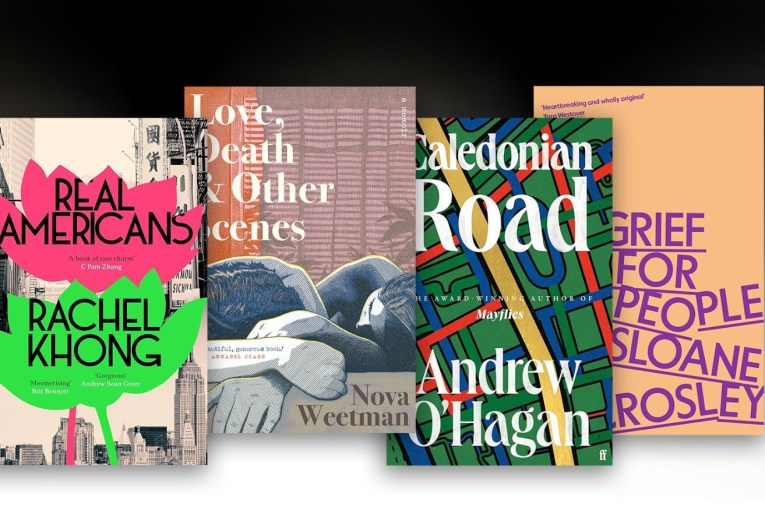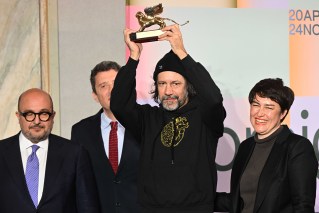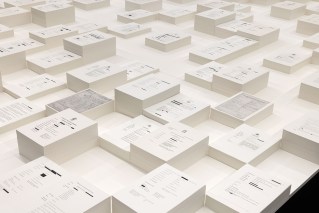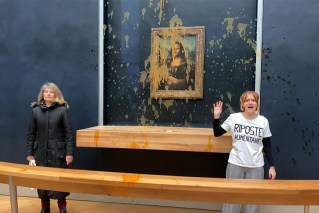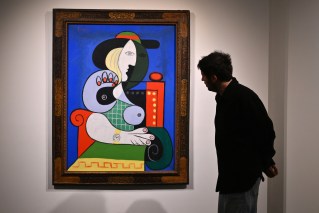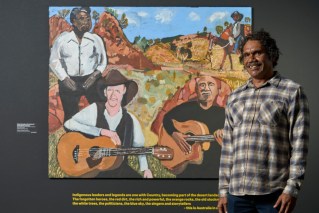Hermannsburg Indigenous artworks sit in US wardrobe for 50 years before selling to SA Museum
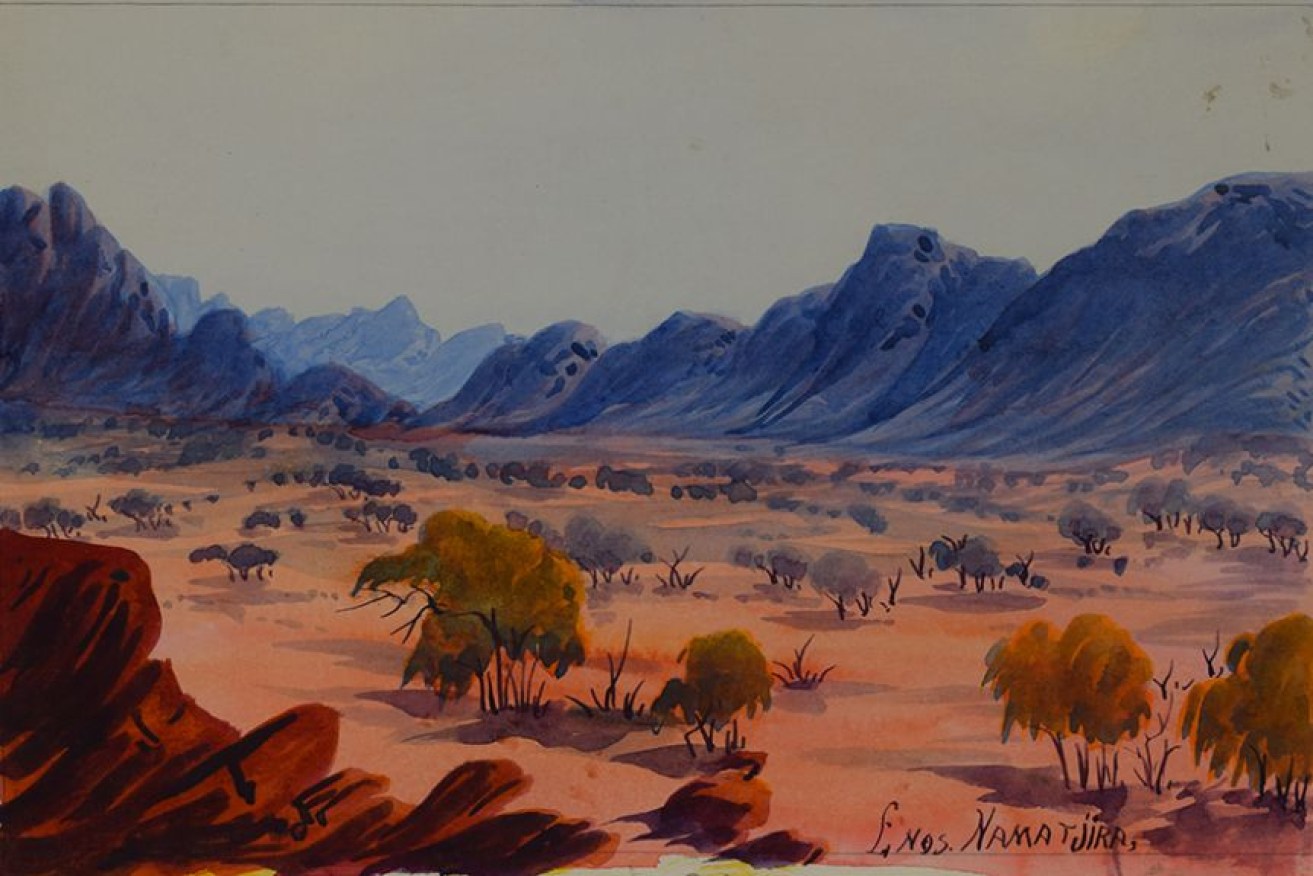
An Enos Namatjira watercolour from the mid-1960s recently purchased by the SA Museum. Photo: Aboriginal Artists Agency Ltd
Aboriginal and Torres Strait Islander readers are advised that the following article may contain images of people who have died
In 1966 the political landscape was very different when Lucy Frederickson, a well-travelled former small-town country girl from the United States, arrived in Alice Springs on a mid-life world adventure.
The Northern Territory was 12 years away from self-government and controlled by the Commonwealth, Harold Holt was Prime Minister, and Indigenous Australians in the NT had only been allowed to purchase alcohol legally for two years.
It was also the year Vincent Lingiari led the Gurindji people off Wave Hill station in protest of wages and conditions.
Ms Frederickson had always had a keen sense of adventure and travelled the world with her husband, Oscar Frederickson Sr, who worked for the US State Department.
Oscar Frederickson Jr said his mother left San Francisco in 1965 and travelled through Asia and then she ended up in Sydney, where he presumed his mother had heard good things about frontier life in the outback town of Alice Springs.
“She fell in love with the area and decided to stay,” Mr Frederickson said.
“She met nice people and got a job.”

Lucy Frederickson and Gabriel Namatjira in front of the Alice Springs Hotel in 1966. Photo: Oscar Frederickson
Pulling beers in Alice Springs
Ms Frederickson worked behind the bar at the Alice Springs Hotel where she befriended artists from Hermannsburg, the birthplace of Albert Namatjira and a former Lutheran mission, 130 kilometres from Alice Springs.
When she returned to the US two years later, she carried a treasure trove of watercolours painted by the descendants of Albert Namatjira.
The collection was mostly stored in the back bedroom of her Long Beach residence for half a century.
“Her desires all along were to sell them as a collection to someone that would appreciate them as much as her opportunity to purchase them,” Mr Frederickson said.
When Ms Frederickson died aged 87 in 1998, the family had to decide what to do with the collection.
It was not until March 2020, just before the world shut down ahead of the global pandemic, that Mr Frederickson travelled to Australia, hoping to raise interest with the pieces.
Despite little interest shown from art galleries, all 67 paintings were put up for auction in Sydney.
According to a representative from Theodore Bruce Auctioneers and Valuers, it was a hotly contested auction with all pieces selling for $34,500.
From closet to museum
Seventeen pieces were bought by the South Australian Museum.
Head of humanities, John Carty, said they “weren’t just resolved masterpieces as you see now with Namatjira and his descendants”.
“Some were experimental works with oil, some really beautiful drawings by Gabriel Namatjira and Athanasius Titus Renkaranka,” he said.

A sketch by Enos Namatjira. Photo: South Australian Museum
Both artists were contemporaries of Albert Namatjira and in Gabriel’s case, a direct descendent of the famous watercolourist.
“People see the finished watercolours, but we’re really interested in the cultural and artistic process that led to this famous school,” Professor Carty said.
A landscape by Enos Namatjira, Albert Namatjira’s oldest son, was in Ms Frederickson’s collection and sold to the museum at the recent auction.

Enos and Albert Namatjira. The pair often travelled together. Photo: South Australian Museum
“We looked into our archives, and we’re looking at the relationship that we have with Enos in our archives, and we’ve found that we had his first drawings,” Professor Carty said.
“In 1934 he did a sketchbook of some drawings in Hermannsburg, so we have these drawings that are really beautiful from a 14-year-old Enos who was travelling around with his dad, watching Albert (Namatjira) working on his images.”
Selling art ‘for grog’
However, for Hubert Pareroultja, a senior artist at Iltja Ntjarra Many Hands Art Centre, there was a darker side to the images of artists in the Alice Springs Hotel.
He has suspected that the artists in the collection, including his elder brother, Helmut Pareroultja, had moved to town to access alcohol.

Hubert Pareroultja remembers some of the artists from the 1960s. Photo: ABC Alice Springs
“I used to see them going into the pub with paintings and selling their paintings for small prices,” Mr Pareroultja said.
It is a source of sadness for him.
“When they used to sell paintings, they used to sell it sometimes for grog, because they were all drinkers,” Mr Pareroultja said.

Lucy Frederickson enjoyed working behind the bar at the Alice Springs Hotel in 1966. Photo: Oscar Frederickson Jr
As for Mr Frederickson’s reaction to learning of the fate of the 17 pieces from his late mother’s collection?
“I couldn’t be more happy that they have ended up in a museum,” he said.
“I was pleasantly surprised that they ended up going to a museum because I think if it’s at a museum, it gives opportunity for everyone to see them.”
–ABC
